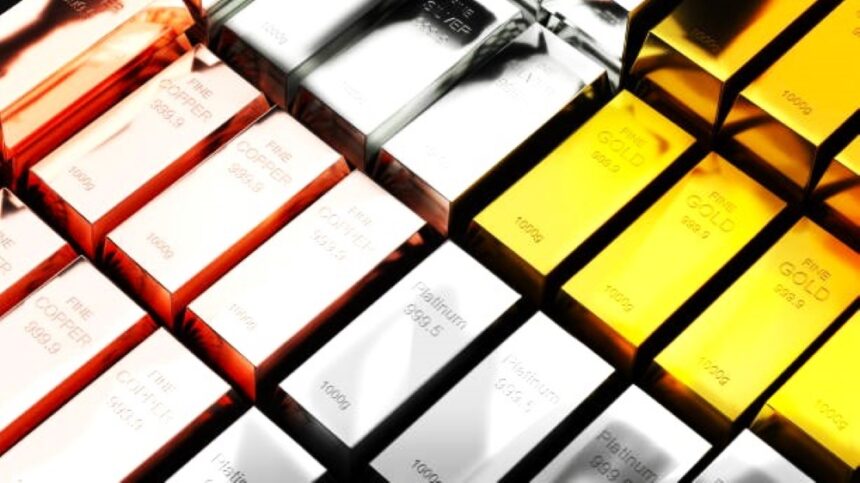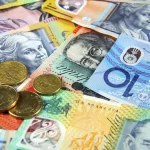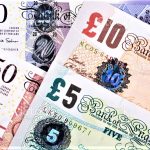Gold prices (XAU/USD) fell on Tuesday, slipping below the key psychological level of $3,400 per ounce, even as global financial markets exhibited growing signs of risk aversion. The decline comes after two consecutive days of gains, with the yellow metal pressured by a resurgent US Dollar and deepening speculation over the Federal Reserve’s future independence and credibility.
Market sentiment remains shaky due to escalating tensions surrounding the August 1 US tariff deadline, with President Donald Trump threatening to impose 30% tariffs on European Union (EU) exports if trade negotiations fail. Although such threats typically boost safe-haven assets like gold, the US Dollar’s rebound is currently offsetting gold’s appeal, particularly for non-dollar holders.
Dollar Strength Weighs on Gold Despite Safe-Haven Demand
Gold’s inverse relationship with the US Dollar was clearly on display during Tuesday’s session. The US Dollar Index (DXY), which measures the greenback’s strength against a basket of six major currencies, recovered to trade around 97.90 after losing more than 0.5% in the prior session. A firmer dollar makes gold—priced in USD—more expensive for buyers using other currencies, thereby reducing demand for the metal.
Investors are increasingly hedging against currency volatility and political risk, yet gold’s upside remains capped due to dollar strength and conflicting central bank signals.
Fed Independence Questioned Amid Political Turmoil
One of the main storylines roiling markets is the growing political pressure on the US Federal Reserve. Treasury Secretary Scott Bessent issued a stark warning, stating that the Fed’s independence is at risk due to a “mandate creep” into areas beyond its monetary policy remit. Bessent called for a comprehensive institutional review of the Fed’s role and structure, sparking fresh debate over central bank credibility.
These comments came amid ongoing rumors that President Trump may dismiss Fed Chair Jerome Powell, although Trump denied such intentions in a Truth Social post, calling the speculation “typically untruthful.” Nevertheless, the damage done markets left guessing about the Fed’s future direction, especially with the July policy meeting just around the corner.
Political Heat Intensifies Pressure on the Fed
The pressure on the Fed has further intensified after Congresswoman Anna Paulina Luna accused Chair Powell of perjury in connection to long-standing renovation projects at the Fed’s headquarters. Although the legal claims may not have immediate implications, they have added to a growing cloud of politicization surrounding the US central bank, raising concerns over its decision-making autonomy.
The uncertainty is significant for gold investors, as a compromised or politically influenced Fed could struggle to maintain inflation control or policy coherence—factors that historically drive long-term demand for precious metals.
Mixed Messages from Fed Officials Add to Gold Market Confusion
Fed officials themselves are offering a mixed bag of signals regarding the path of interest rates. Their diverging commentary has left traders uncertain about how aggressively the Fed may respond to rising inflation or growing downside economic risks:
FOMC Governor Adriana Kugler said the central bank should not lower interest rates “for some time,” noting that the inflationary effects of Trump-era tariffs are still unfolding.
San Francisco Fed President Mary Daly, however, painted a more flexible picture, stating that two rate cuts in 2025 would be a “reasonable” outlook. Daly warned against waiting too long and emphasized that the neutral rate post-pandemic is now closer to 3% or higher.
Fed Governor Christopher Waller struck a more dovish tone, arguing in favor of a rate cut at the July meeting, citing growing economic vulnerabilities. Waller cautioned that delaying easing may force the Fed into even more aggressive action later.
This range of perspectives has complicated the interest rate outlook—a key factor that traditionally drives gold prices. A more dovish Fed typically supports gold by lowering opportunity costs, but uncertainty about the Fed’s institutional future is muting this usual correlation.
Trump’s Tariff Deadline Looms Large
With the August 1 deadline fast approaching, global markets are focused on the outcome of trade negotiations between the US and the European Union. If a deal isn’t reached by that date, Trump has vowed to slap a 30% tariff on European exports, escalating an already strained transatlantic trade relationship.
While trade-related tensions generally boost demand for gold, investors remain cautious about whether the rhetoric will translate into action. According to EU diplomats cited by Reuters, the bloc is preparing countermeasures, indicating that a tit-for-tat tariff escalation could unfold in August.
Should tariffs be implemented, safe-haven flows into gold could resume in force. For now, however, markets are still weighing the possibility of a last-minute deal or delay.
ECB in Focus Ahead of Fed Decision
This week also brings a key policy update from the European Central Bank (ECB). The ECB is expected to hold interest rates steady at 2.0% after several rounds of cuts, as policymakers assess the impact of their easing measures on Eurozone inflation and growth.
However, markets are more focused on next week’s Fed decision, which could serve as a catalyst for a broader move in gold prices. With inflation still above target and Fed credibility under fire, the July meeting is shaping up to be one of the most important in recent memory for global financial markets.
Chinese Slowdown Remains in the Background
Although not in the immediate spotlight, the Chinese economy remains a key macro backdrop for gold. Recent data showed GDP growth slowing to 5.2% in Q2 from 5.4% in Q1, alongside underwhelming retail sales figures. While industrial output surprised to the upside, concerns persist about China’s recovery path.
Any sharp deterioration in Chinese economic activity could push investors back into gold, particularly if global demand falters and central banks are forced to react with stimulus. However, for now, the gold market remains more tightly correlated to US-centric factors, including interest rate policy and political drama.
Conclusion: Gold Struggles for Direction Amid USD Strength and Policy Fog
Despite a turbulent geopolitical and monetary backdrop, gold has struggled to capitalize on safe-haven flows, trading lower below the $3,400 level. The pullback reflects a dominant US Dollar, growing investor caution, and uncertainty over central bank policies on both sides of the Atlantic.
As markets brace for a potential EU-US tariff battle, a key ECB rate decision, and a politically charged Fed meeting, volatility in gold is likely to persist. While medium-term fundamentals still support the case for gold in a high-risk world, short-term dollar strength and unclear policy signals are likely to keep prices rangebound at least until August brings greater clarity.
Disclaimer: This blog is for informational purposes only and does not constitute financial advice. Always conduct your own research and consult a professional advisor before making investment decisions.
[sc_fs_multi_faq headline-0=”h2″ question-0=”Why did gold prices fall below $3,400 despite global risk aversion?” answer-0=”Gold prices dropped due to a stronger US Dollar, which makes dollar-denominated gold more expensive for foreign buyers. This offset demand despite heightened geopolitical tensions and trade fears.” image-0=”” headline-1=”h2″ question-1=”What impact does Fed independence have on gold prices?” answer-1=”Any threat to the Fed’s independence can increase long-term inflation risks or policy instability, which typically boosts gold. However, in the short term, political uncertainty and mixed Fed messaging may create confusion and volatility in gold markets.” image-1=”” headline-2=”h2″ question-2=”How does the US Dollar affect gold prices?” answer-2=”Gold and the US Dollar have an inverse relationship. When the Dollar strengthens, gold becomes more expensive for holders of other currencies, usually pushing prices down. ” image-2=”” count=”3″ html=”true” css_class=””]









